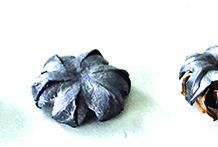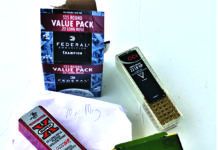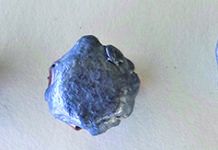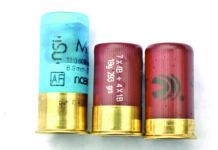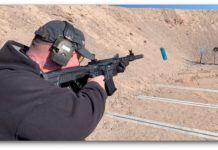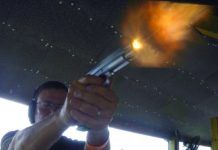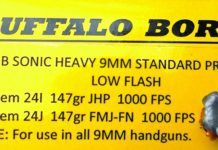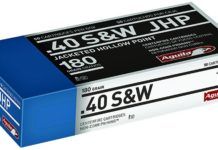380 ACP Ammunition Testing: Bullet Development Continues
Twelve 22 Long Rifle Cartridges, Shot From a Rifle This Round
9mm Barrel Lengths Compared In Range Performance Testing
12-Gauge Mini Shells from Federal, Aguila, and Nobel
Gun Tests Ammunition Comparisons
Here's a compilation of head-to-head ammunition testing conducted by Gun Tests magazine.
Twenty 22 Rimfire Loads Go Head to Head at the Range
The most popular and most produced cartridge in America is the 22 Long Rifle. This is an old design, using not only rimfire construction but also a heel-based bullet. For this reason, many of us do not recommend the 22 LR ever be considered for personal defense. It isn't all about limited wound potential. The 22 rimfire firing system isn't as reliable as a centerfire system. Also, the heel-based bullet sometimes is damaged when feeding in a semi-auto firearm. It isn't unusual for a brick of 500 cartridges to contain several cartridges that misfire and do not ignite, even with a hard primer hit. Others will have the bullet bent in the cartridge case, which complicates feeding. On the other hand, during a test of self-loading pistols a few months ago, we fired 1600 22 Long Rifle cartridges from several makers without a single malfunction or failure to fire.
For this test we were looking at some of the better choices for hunting with the 22 round. The 22 rimfire is a great small-game round that offers excellent accuracy in the right handgun. While there have been plenty of tests of accuracy and velocity with this round, we set out to test penetration and expansion. We used our standard 6-inch-wide water jugs. We tested first for accuracy and then for penetration, along with standard metrics of accuracy, expanded diameter, and retained weight.
The primary firearm used was the Smith & Wesson Model 17, also known as the K-22, with a 6-inch barrel. This revolver is proven to be accurate. Since self-loaders demand high-velocity loads, the revolver eliminated any concern with function and allowed us to test 22 Short, CB Cap, and Quiet type loads without concern.
We also tested a number of select 22 loads with the Ruger Standard Model .22. The range results were interesting. In the end we isolated a number of very versatile loads for specific chores and other loads that do a number of things well. We rated the cartridges based on what they were designed to do. There is a great deal of difference in performance between the CCI Quiet load, as an example, and the CCI Stinger, but each rates an A because they perform as designed in a niche role.
The best hunting load, we believe, is the Federal Small Game Match load. A viable choice for all-round hunting use is the CCI Mini Mag. While we place a premium on accuracy, all of the loads tested were accurate enough for small-game hunting. We tested the loads at 15 yards because we were using iron-sighted handguns.
Overall, the 22 rimfire loads gave good results. We could get by with a single inexpensive practice load and a hunting load, but it is good to have the versatility of fast-opening loads intended for short-range pest control and heavier loads intended for deeper penetration. Here's how each load performed individually.
What’s New in the Gun World?
Hey Shooters: Lots to talk about in this edition of Straight Shooter's "Gun Report," your semi-automatic source of gun-culture news, new-product insights, and whatever else we could find when rooting around in the bottom of the metaphorical range bag.
SHOT Show 2019: Shotguns, Ammo, Compact Pistols, and Aftermarket AR Trigger
At SHOT 2019, Gun Tests Editor Todd Woodard rustled up some interesting products that are beginning to appear this spring. Here's a quick look at new self-defense ammo from Browning and Winchester, a new shotgun from Armscor, new compact pistols in 9mm and 380 ACP from Springfield Armory, and a new drop-in trigger for your favorite AR-15 from American Tactical.
2018 Guns & Gear Top Picks: Firearms
Deep-Penetrating Heavy-Bullet 9mm Loads: Pretty Good Picks
The 9mm Luger cartridge is the most popular handgun centerfire round in the market today. It's easy to understand why: The 9mm is a powerful number with high velocity and good accuracy potential, and it can offer deep penetration with the proper loads. Also, the 9mm is controllable in compact handguns by shooters with modest experience, and many very experienced shooters favor the 9mm as well. At the same time, the 9mm has a well-documented string of failures with non-expanding loads and loads lacking sufficient velocity and energy to ensure penetration. This just proves all jacketed-hollow-point bullets are not created equal, and too little penetration may not stop an assailant. The ideal load should have a balance of expansion and penetration. The 147-grain 9mm has been criticized by some for lacking expansion potential. The 147-grain load originally was designed to meet FBI requirements for deep penetration and barrier penetration. Expansion was modest. Many 147-grain loads still meet this criteria, while others demonstrate greater expansion. A new choice is the 135-grain bullet weight. This projectile is designed to provide greater velocity than the 147-grain JHP while offering greater penetration than the popular 124-grain expanding bullet.
We tested two 135-grain loads along with ten 147-grain JHP loads and a single 150-grain JHP as well as a heavyweight 165-grain combination. For those living in a true four-season climate that find themselves likely to face heavily bundled adversaries, these loads offer optimal performance. Anyone needing penetration against light cover might consider these loads. A follow-up question would be are they the best choice for personal defense? We believe that some of the 147-grain loads provide a good choice for personal-defense use compared to light-bullet loads with less expansion. The HST, as an example, offers excellent expansion and deep penetration in water.
We used a new Glock 19X as a test gun. The barrel length at about 4 inches is a compromise between service pistols and subcompact handguns. We fired three cartridges of each load to average expansion and penetration in water. We also fired three five-shot groups for accuracy at 25 yards. The remaining rounds were fired for function testing. During the test, there were no function problems of any type. Accuracy was likewise good in every case, with some loads being more accurate than others.
New Handguns and Ammo for 2018
Gun Tests reporters and editors on the scene at SHOT Show 2018 in Las Vegas scoured the show for new pistol and handgun accessory entries for our readers to consider this year. Amazingly, a handgun made of steel with a design more than 100 years old — the fabled 1911 — still drives the market. A third of the new guns that follow are based on this legendary platform, followed closely by pocket pistols, and it's clear the revolver is not the antiquated firearm many assume. In fact, when it comes to handguns, 2018 is a good mix of old, new, plastic, and steel, with a wheelgun or two thrown in for good measure, along with loads for defensive handgun use to feed these new beasts. Here's a rundown on a few new handgun and ammunition choices for 2018 that our staff thought were notable and which we'll be looking to include in future issues.































